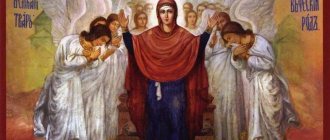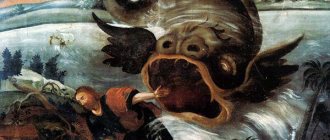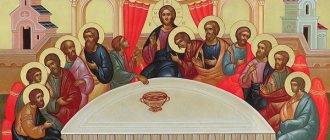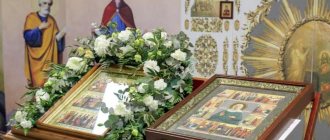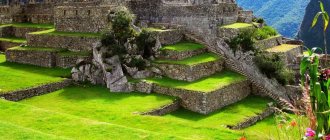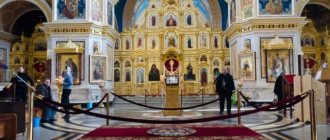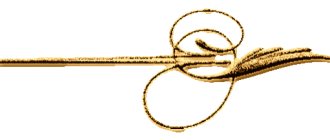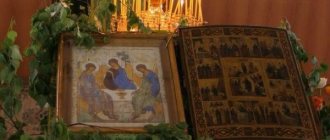Exclusive icons
Buy Icons
We engage in both retail and wholesale sales of Orthodox icons and utensils. select and buy an icon at a retail price in our catalog.
To purchase icons at wholesale prices, you must register on the website or contact our wholesale sales department.
For information: We are direct suppliers of most items presented in our catalog. This means that prices for icons and utensils will be better than other offers. After all, the price will not include the interests of the intermediary.
The reliability and quality of the products offered are confirmed both by manufacturer certificates and by constant established relationships with many dioceses.
Silver Axion Icons
Silver Axion icons come in a wide variety. Using silver, gold and a wide range of silk-screen printing inks, the company’s specialists managed to convey the spirit of the Byzantine icon, high-quality and original color reproduction of famous originals. The company uses the latest technologies to create new icons, both from already known copybooks and through the work of its own icon painters. This makes it possible to mass produce without missing out on even the smallest detail. To improve SilverAxion products, the company’s specialists have developed a special method for coating and protecting silver, which allows it to preserve its original appearance for many years. Control of the production process guarantees the quality of raw materials and satisfaction of consumer demands. All products meet the high standards of SilverAxion. exports its products to more than 25 countries in Europe and America.
Silver icons
More details about the types of silver icons, as well as about what kind of icons the Silver A[ion company produces, can be found in the article about silver icons.
Byzantine icons
After many years, numerous religious disputes, disagreements and spiritual searches, what we today call Byzantine iconography appeared. Many representatives of the Church, such as St. John of Damascus, St. Basil and others, shaped the structure and style of the Byzantine icon. Over time, icons combined Greek, Roman and Christian cultures. Today, Silver Axion is proud to continue to use the same traditional methods developed by our ancestors many years ago.
Greek icons - concept and features
Icons are images of God, the Virgin Mary, prophets, saints and righteous people, revered by believers. The tradition of worshiping them arose along with Christianity. According to legend, the first image of the Mother of God was written by the Evangelist Luke on a board from the dining table.
The largest center of icon painting was Byzantium. The shrines created here are called Greek because Greek Orthodox culture predominated in the empire. An important factor for the Byzantine tradition is strict canonicity. A master depicting Divine images subordinates his creativity to a number of rules and laws. Despite this, art has evolved over time.
Researchers divide the history of the religious artistic tradition of Byzantium into different periods. Depending on the political situation in the state, the attitude towards icons also changed - from a complete ban to the flourishing of spiritual painting. If we highlight the most important features of the Greek tradition, we can list the following features:
- strict selection of colors, background (most often, the background was golden), and plot, in accordance with the canon;
- the desire to convey the spiritual world, convention in the depiction of faces, clothes, proportions;
- sankir way of writing, that is, complex modeling of perspective, thanks to which a sense of volume is achieved;
- simplification of the writing style in the Athonite school - softening of lines, more conventional drawing.
Despite periods of political prohibitions and Turkish rule, when images of saints were prohibited, Greek masters managed to preserve unique art to this day. Now this is a very popular area. Many pilgrims and believers seek to purchase icons created on the holy land of Athos.
Guest from Greece. Master class on icon painting
The famous Greek icon painter, author of many books on the history of Byzantine icons and the technique of painting icons, professor of the Theological Faculty of the University of Athens Georgios Kordis is visiting Russia for the second time. On February 6 and 7, Mr. Cordis gave a lecture and master class at the Orthodox People's University in St. Petersburg, which was attended by several hundred people. “Living Water” managed to interview the legendary master in an exclusive interview.
| Georgios Kordis |
– Mr. Kordis, how did you start doing icon painting?
– While studying at the Theological School, I met the Cypriot monk and icon painter Father Simeon Simeu. He introduced me to the art of icon painting, and it is he who I can call my teacher. By that time I already had some artistic training, I was engaged in secular painting, worked in different styles and even painted expressionistic canvases. Under the guidance of Father Simeon, I began to study not only the technique and technology of icon painting, but also the history and theological foundations of icon painting. My teacher told me: “You can learn to paint beautiful images of Christ and the saints, but if you don’t love those you paint, nothing will work. You need to live the life of the Church, you need to have deep faith, and only then will you be able to paint icons.” His words still mean a lot to me.
– Did you have any classical art education?
– I lived for several years in Boston, in the USA, and completed several specialized courses in aesthetics, theory and history of icon painting, while simultaneously studying at the School of Art at the Boston Museum. Naturally, I mainly tried to study medieval painting.
– Does an icon painter need a classical art education?
– In my opinion, classical education is not only not necessary, but in some cases it can even be a hindrance. All the basic concepts in classical art are completely different from those in the icon. The way a secular artist understands his work is fundamentally different from how an icon painter should comprehend his work.
– How is icon painting taught in Greece?
– In Greece there are no specialized icon painting schools similar to the schools in Russia. A person who wants to learn icon painting comes to study not at an educational institution, but with a specific master. Nowadays, almost every Greek parish has an icon-painting workshop. In one of these workshops, at the Theological School at the University of Athens, I teach with my assistants. And I am sure that this is the best method of training, since only working in a team next to a professional can train a good icon painter.
| Christ before Pilate. Icon by Georgios Kordis |
– In icon painting schools in Russia, the process of teaching icon painting is organized according to the principle of gradual mastery of the material.
So, for example, first students draw ornaments, elements of architecture and landscape, and then move on to working with traces. How is training organized in Greek workshops? – During the first two years, the main task is to study the traditional language of icon painting, and only when this language has been carefully studied can one begin to paint an independent icon.
We usually start with a drawing. And we try to teach a person how to draw independently and freely. Of course, ancient designs are copied, but copying is never a mechanical reproduction; each time we try to explain the basic principles of constructing a figure, a particular composition. In fact, the entire first year of study is devoted to drawing: they draw the human figure, simple compositions and learn to work with egg tempera. During the second year, work on the drawing continues and work on complex and large compositions proceeds more seriously. The technologies of working with egg tempera are studied in depth, and picturesque images are painted. By the third year, students already know quite a lot about the principles of constructing both a single figure and multi-figure complex compositions, they are already quite fluent in drawing and the technique of egg tempera. Only after two years of intensive work are they trusted to paint the icon.
- Only in the third year?
- Yes, only in the third year. Compositions written during the first two years are written on paper glued to the board. These works are not yet icons, they are educational works in which the artist learns how to correctly construct a face and figure from various angles, complex compositions. We strive to ensure that our students can independently create, for example, scenes from the life of a particular saint based on the text of the life.
– How long should an icon painter work to become a good master?
– In my opinion, to become a master, you need to work for fifteen to twenty years. You have to draw a lot. And when you make your eighteen thousandth drawing, you will get closer to something.
– Are there any special areas of development, schools of icon painting in Greece?
– Yes, this is an important question. Greek icon painters spent approximately three decades copying. But icon painters are already beginning to appear who are striving to slightly update the tradition. Of course, each artist has his own personal preferences. Some paint with brighter colors, some make very light and decorative images, some paint figures with elongated proportions. But there are a number of masters who, while remaining within the tradition, try to perceive it more individually. There are very good masters among them. And I think that this desire for a creative perception of icon painting is very important.
– How can you determine the direction in which you are working?
– For me, the process of painting an icon using the principle of contrapposto is very important, that is, when, for example, in the image of a figure there are two movements directed in different directions. This is a very complex and deep concept of the regularity and harmony of the relationships between the parts of a figure or composition. It is very important for me that the composition in the icon is built according to this principle.
| Myrrh-Bearing Women at the Holy Sepulcher. Icon by Georgios Kordis |
– What is an icon for you?
– An icon for me is a presence. With the help of contrapposto, I try to create the opportunity for communication and interaction between the viewer and the image of the saint who is represented on the icon. Many patristic texts tell us that for the ancient masters this was perhaps the most important quality in an icon. Icons were painted not to decorate the church, but so that the church would be sanctified by the presence of the saints depicted on it. The icon provided a connection between the saint and those praying. And in my works I try to make this presence possible.
– How is your working day organized?
– Almost every day I teach classes at the university, usually I give two or three lectures, which requires serious preparation. Unfortunately, I only have a few hours a day for independent work. This is very difficult, but so far this problem remains insoluble.
– At the master class you showed a masterly command of icon painting techniques. In just over three hours you painted a rather large image of St. John of Damascus. Do you always work so productively, and do you happen to paint several icons in one day?
– Yes, that’s how it usually turns out. When my team and I are painting a church, the usual daily requirement is ten and sometimes fifteen square meters. The team consists of five to seven people, and they are very highly qualified craftsmen; the work is always carried out very smoothly and accurately. I do the drawing for all the compositions, then a second person comes in to brush off the charcoal and apply the first layer, then the next person continues his work. In this way, all the primary colors are laid out and all the secondary writing is done. After that, I paint all the spaces and shadows on the clothes, paint faces and sometimes hands, and my assistants finish everything that remains - halos, inscriptions - and finish the work.
– Your palette is very meager and consists of only four colors. What is this connected with?
– Yes, indeed, in my work I use only four pigments – titanium white, black, yellow ocher and red ocher from Herculaneum. And I very rarely attract other colors. This was the palette used by the ancient Greek artist Polygnotus, and this is how ancient icon painters worked. I have heard and read a lot about this method of work, but I have never used it in practice. It was only after attending a conference on medieval Greek icon painting that I learned a lot about this system and decided to try it myself. I was greatly amazed to see that with these four ingredients it was possible to create all the colors needed for painting. You begin to feel the benefits of this painting system especially strongly when you paint a church. The result is amazing: on the one hand, you can achieve any brightness of colors, and on the other, the overall unity and harmony of all images is preserved. The color is present, but the paintings as a whole look very harmonious, contrasting, but not too active.
– Do you give preference to any particular period in the development of Byzantine art?
- No, there is no such period. I love Byzantium, I like the Russian school of icon painting, I like other schools. In any tradition, school, in any direction there is always special expressiveness and beauty.
– What personal qualities, in your opinion, should an icon painter have?
– It is impossible to become a good icon painter without personal experience of church life. It seems to me that the most important thing is faith, a person’s personal faith in God. And if there is no faith, then what will you write? After all, it is impossible to draw something that you have not learned from your own experience.
– How do you understand creativity in the Church?
– In my opinion, creativity in the Church is when you say the same thing that was said before you, but you say it independently, from yourself, from within yourself. And icon painters face precisely this problem. The question is not to create a new image of Christ, but to pronounce this icon from within oneself, from one’s depths, to take this image out of one’s inner world. Very often we copy the external features, the shape of the icon, but we do not “live” this image; I think this is the biggest problem of modern icon painting.
– Throughout the 20th century, the Russian icon painting tradition was preserved thanks to the work of restorers and the ascetic work of a few icon painters. How did Greek icon painting develop in the 20th century?
– The work of modern Greek masters is largely based on the work of the icon painter Kondoglu, who worked since the 1920s. It was he who reconciled modern icon painting with Byzantine art. He visited Mount Athos, looked at many monuments and decided to start working in the Byzantine style in order to return the Byzantine style to the church. Almost all modern icon painters of Greece can be called his followers.
– A modern icon painter has access to a huge number of images created in different eras, belonging to different schools and styles. How not to get lost in all this diversity? How to find yourself in the world of these images?
– This really is a problem. And you will definitely repeat yourself if your work is based on books. The tradition is passed on from person to person, from master to student. And only the method of learning from a master - the method that I spoke about at the very beginning - can give you confidence in what you are doing. If you have talent, you can work better and harder than your teacher, and your students can do even better. Tradition is passed down by people, not books.
| Georgios Kordis |
– You have been engaged in icon painting for more than thirty years.
How do you manage to maintain a creative attitude towards work? – Firstly, I don’t keep my own drawings. I try to throw them away and when I take on a new job, I start from scratch every time. I try not to repeat myself. The drawing is done in a new way every time. I also don’t keep my own icons. I have a few, I give away the rest. And another very important point: when I work, I try to find a new solution to the task every time. You need to draw again each time precisely so that the image you make corresponds to the place where it will be located. So, in every church I try to determine each time, to find what exactly will be suitable for this church, and I never repeat what I have already done.
– How do you feel about icons painted in a realistic manner, and not in the so-called “canonical style”?
– Here my opinion does not mean much, but we can observe a similar situation throughout the modern Church. Let us recall, for example, some modern saints about whose lives we know quite a lot. Thus, we know for certain that some of them prayed in front of images of Christ and saints, painted in a realistic manner. We can remember Saints Seraphim of Sarov, Nektarios of Aegina and others. In many churches in Russia and Greece and throughout the Orthodox world there are miraculous icons that are not painted in the Byzantine style. This is a fact and we cannot dispute it. I believe that the best style for creating an icon can be called the style traditional for a particular region; this style can best convey the spirit of the Church. But if an artist in some community in Africa, China or Japan tries to paint an icon of Christ and tries to make the image in a worthy manner, like a real icon, it will be an icon. We cannot say that this is not an icon. An example is the Gospel. The Gospel is translated into many languages of the world. When we translate it, we do not change the content, and it seems to me that we should not be so “dogmatic” about the concept of style. We need to preserve our tradition, and I am sure that the Byzantine tradition is the best for icon painters, but we cannot elevate it to dogma.
– Please say a few words about your book, which is being prepared for publication in Russian.
– I don’t know how the title of the book will be translated into Russian. In the English version the book is called “Icon as Communion. The Ideals and Compositional Principles of Icon Painting” (“Icon and Community. Ideas and Compositional Principles of Icon Painting”). This book is about the Byzantine technique of icon painting. I'm trying to talk about the foundations on which Byzantine drawing is based, to explain why we draw this way and not otherwise. Also, much attention is paid in the book to the purpose of the line in the Byzantine tradition; it is about the relationship between the different elements of the icon and the relationship between the icon and the viewer. And, of course, all theoretical explanations are illustrated with my drawings.
– This is the second time you have accepted an invitation to conduct a master class in Russia. Why is this trip important to you?
– Every time I leave Greece in order to meet people who love icon painting, in order to exchange experiences with them. This is precisely the main goal for me. And I am glad if my work experience will be useful for my colleagues. I don't mean directly borrowing the technique and techniques I've demonstrated, I'm talking about adapting this method for my own work. Of course, there are language problems, since few Russians speak English, much less Greek. But thanks to translators, communication is possible. And I can say that people say a lot not with words, but with their eyes. And I think this is also a very important part of communication.
Interviewed by Olga Shalamova and Philip Davydov Photo: Stanislav Marchenko
Modern icons from Greece
Nowadays, the painting of icons has become an important branch of the economy in Greece, since the demand for icons from Greece, which are purchased by Orthodox tourists and pilgrims, does not decrease.
Lists (copies) of icons of the Blessed Virgin located in the monasteries of Athos are especially popular. They are well known not only to Orthodox believers, but also to art connoisseurs. Let us remember that some of these lists were made from icons painted, according to legend, by the Evangelist Luke himself during the life of the Mother of God. Prayer in front of such an icon, even if it is on a list, brings peace and grace to the soul.
( 1 ratings, average: 5.00 out of 5)
List of Greek icons of the Virgin Mary
A very important component of the Greek tradition is the image of the Mother of God. Different sources reveal from four to six types of writing of the image of the Virgin Mary:
- Oranta (Praying) - here the Mother of God is depicted standing with her hands raised in prayer. At the chest level of the Heavenly Queen there is a sphere on which Christ is inscribed. This type reflects the moment of the incarnation of God through the Virgin Mary, that is, the pregnant Mother of God.
- Hodegetria (Guide) - has this name because in the half-length image the Mother of God points the viewer with her hand to her son, the Infant Jesus, blessing Her. The Mother of God, as it were, gives spiritual guidance to believers.
- Eleusa (Tenderness) is one of the most touching and gentle types. The appearance of the Heavenly Lady hugging her son, who responds to her affection, is perhaps the most powerful embodiment of the mutual love of a child and a mother, so understandable to every common person. The value of the plot is in conveying the emotional state of Christian sacrificial love.
- Panahranta (The Queen of All) is a majestic image of the Virgin Mary seated on a throne with the Christ Child. Here the Heavenly Lady personifies the power and glory of the Church of the Lord.
- Agiosoritissa (Svyatorachitsa, Chalkopratiyskaya) is the image of the Mother of God, alone praying for the human race. The Virgin Mary without a baby is depicted half-turned, with her hands raised to God. One of the most ancient images of the Mother of God. In addition to this type, there are other images of the Heavenly Queen, without Jesus.
- Akathist icons are a whole series of icons of the Virgin Mary, in the form in which She was glorified in akathists and canons. These images include “The Burning Bush”, “The Inexhaustible Chalice” and others.
Classification
In the sources you can find different methods of classification. But, in most cases, six types are distinguished according to purpose:
- personalized icons depicting the heavenly human intercessor;
- dimensional images that correspond to the height of the child are given for christening;
- family icons depict saints who patronize members of the family;
- wedding images of Jesus Christ and the Virgin Mary are needed for marriage blessings;
- holiday icons are dedicated to solemn dates of the Christian calendar;
- votive images are created in gratitude to God, according to a promise.
In terms of technique, there are two main directions: the canonical and academic style of writing. The first is characterized by strict adherence to the canon, therefore the role of symbolism, features of the facial expressions of holy faces, colors, and clothing elements is great. The second style is distinguished by a more modern interpretation of Christian subjects, this shows the influence of Western European artistic tradition.
The scale of the image can be main (only the face is written), shoulder-length (for example, “The Ardent Eye of the Savior”), half-length (images of the Mother of God with the Child Christ of the Hodegetria type), throne-scale (for example, “Holy Trinity” by Andrei Rublev).
One image can depict one story, for example, “The Baptism of Jesus,” or several stories, as on hagiographic icons with terminals. The latest, multi-subject images include Jerusalemia, which tells about the holy places of the city.
